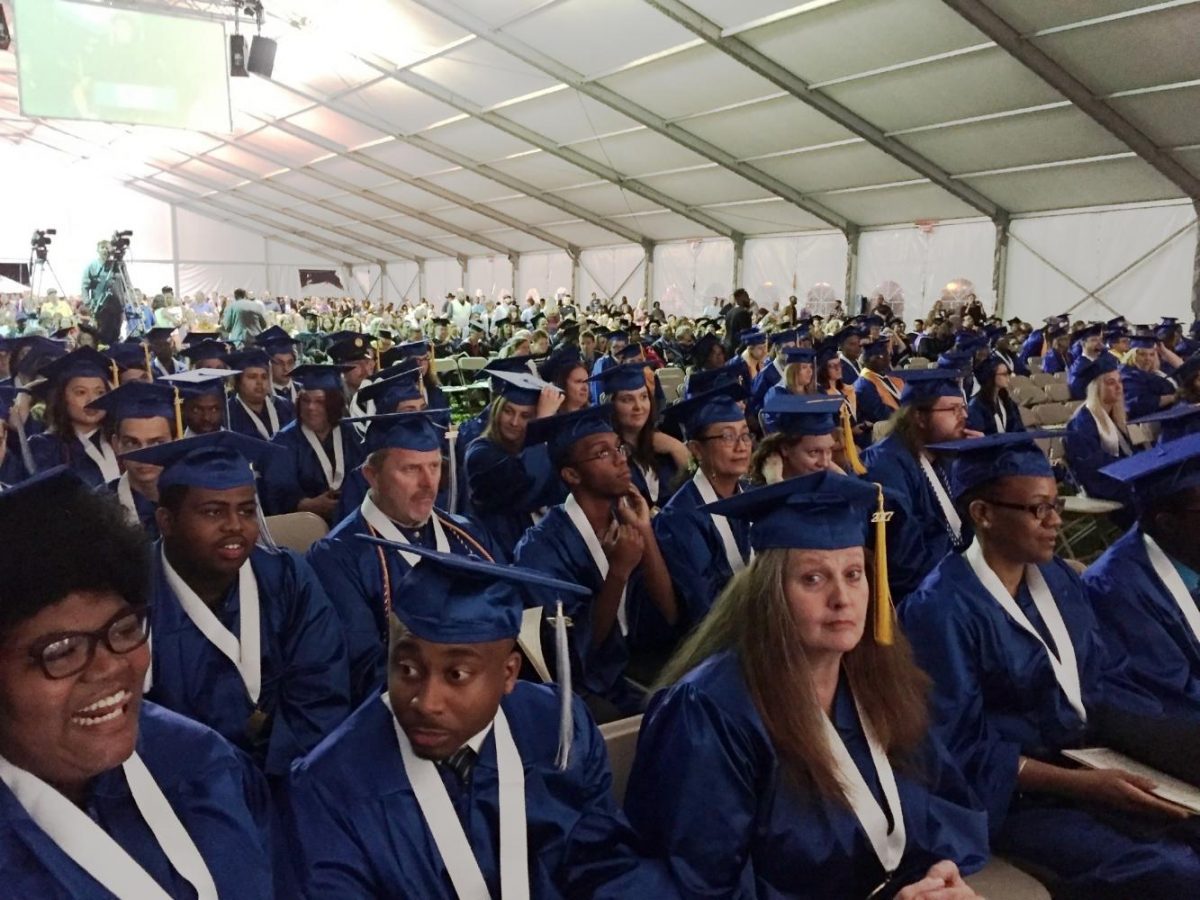Report shows minority grad rates increasing
More than 46 percent of non-white students who started at AACC in 2012 graduated or transferred by 2016.
September 29, 2017
Black students who enrolled at AACC as freshmen in 2012 were more likely to graduate or transfer to another college than those who started in 2011, according to an Oct. 1 report.
The graduation rate had fallen to 40.2 percent—an all-time low—among black students who first enrolled in Fall 2011, according to a report the college submitted to the Maryland Higher Education Commission.
The report explained that in 2011, enrollment was at its peak because of high unemployment associated with the recession. But as the economy recovered and students found jobs, the report said, they left AACC.
The graduation-transfer rate rebounded to 46.3 percent for students who started in Fall 2012, the report said.
Retention—when a student stays in school from one Fall to the next—was up 5.9 percent among black students in the 2012 cohort, and 2 percent for Asian students.
Still, said Dr. Mike Gavin, AACC’s vice president of learning, “There’s an inequity in our outcomes for students.” At an August meeting for all faculty and staff, he added, “We need to change our systems in order to offer resources to students who need them in a different way.”
For Latino students, however, retention dropped by 5.8 percent.
Community colleges in Maryland are required to track their progress in six broad goals set by MHEC, including one of increasing diversity.
More than one-third of AACC students enrolled in credit classes are minorities.
In April of 2016, AACC adopted a strategic plan with a goal to “establish a collegewide framework that intentionally addresses issues of diversity, equity and inclusion.”
Psychology professor Dr. Kelly McCants-Price told Campus Current the college can accomplish this by ensuring that students see people like themselves in the curriculum.
“Otherwise some of them may feel like … this curriculum or this subject matter is not something that’s meant for me; I’m not meant to be successful,” McCants-Price said. “Professors need to go the extra mile to show you that it’s possible.”
“Right now, I mean … I don’t really see ‘me’ being in [the curriculum],” junior Lanija Wallace said about her sociology course. “More like, old guys, none of them African American.”
The college has set up an “equity response team” to help determine how courses can better represent and accommodate students.
The team is first focusing on making equity improvements to nine high-enrollment, low-success courses, like Psychology 111. Possible changes include creating common syllabi and ensuring all videos used in classes are closed-captioned.
Some classes already make efforts to promote diversity and communication.
“There are a lot of ethnic groups [in my classes],” business sophomore London Sutton said. “Especially in my communication class … we just did an intro of ourselves and we actually just explained some of what our culture is, some of what we believe in as people. That was cool.”
But McCants-Price said the college still has more work to do.
“There’s some folks who look at their courses and they say … this whole conversation about race, diversity, all this other stuff, this is not relevant to my curriculum or I don’t have time to cover it,” McCants-Price said.
She said classes in any subject can benefit from using examples of people of color, different genders, socio-economic class or sexual orientation.












